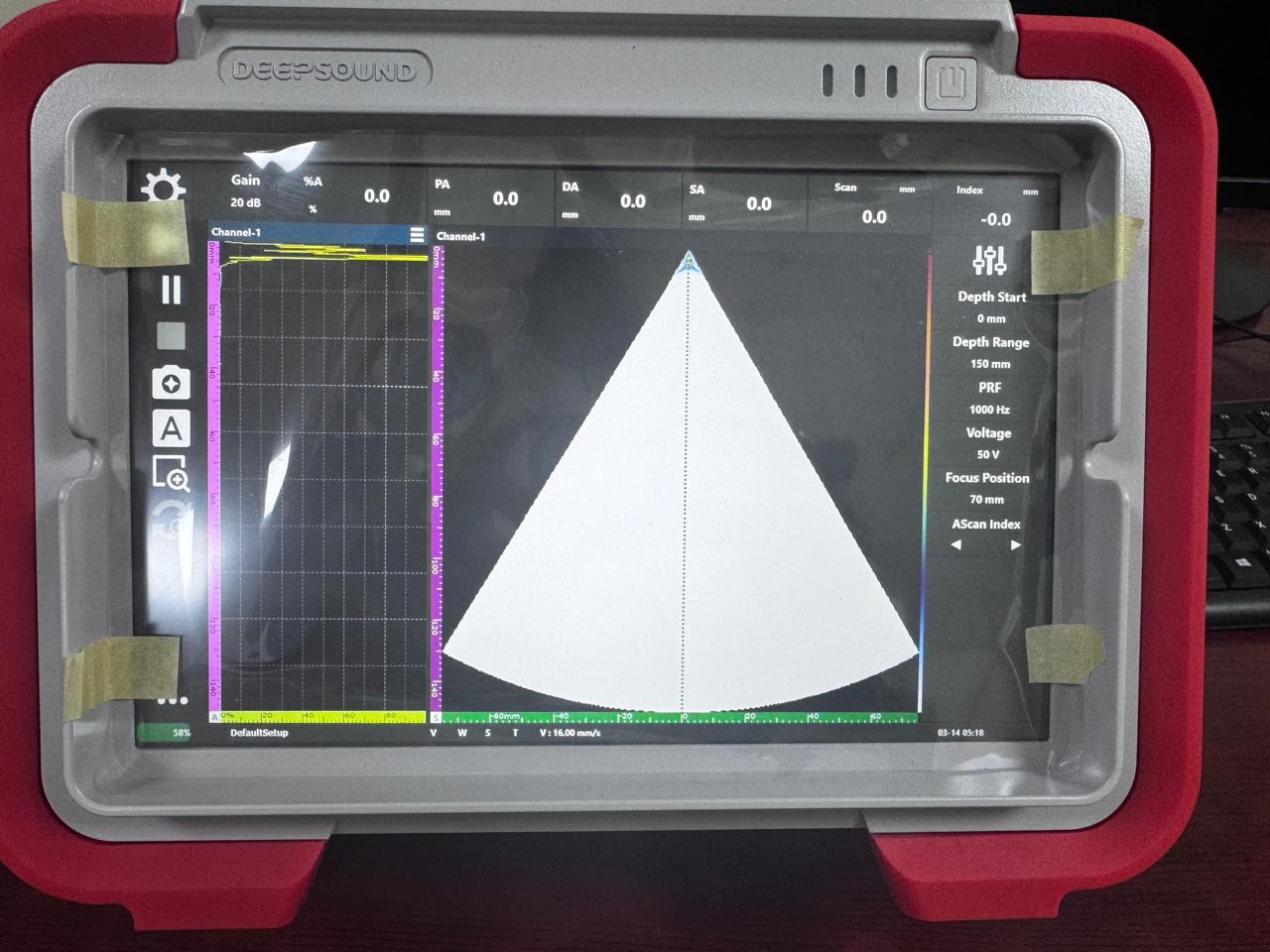
Phased Array Ultrasonic Testing (PAUT) is an advanced non-destructive testing (NDT) method that uses multiple ultrasonic elements and electronic time delays to generate and receive ultrasound. This technique allows for electronic control of the ultrasonic beam, offering significant advantages over conventional single-element ultrasonic testing.
How does Phased Array work?
In conventional ultrasonic testing, a single transducer emits and receives ultrasonic waves. In contrast, a phased array probe consists of multiple small elements, each of which can be individually controlled. By applying precise time delays to the excitation of these elements, the ultrasonic beam can be:
- Steered: The angle of the beam can be changed electronically, allowing for inspection of a component from multiple angles without moving the probe.
- Focused: The beam can be focused at specific depths within the test material, improving the detection and sizing of defects.
- Scanned: The beam can be swept across the test material electronically, enabling rapid inspection of large areas.
This electronic control provides greater flexibility and efficiency in ultrasonic testing.
Advantages of PAUT
- Enhanced defect detection: Beam steering and focusing capabilities allow for more comprehensive inspection and improved detection of defects at various angles and depths.
- Faster inspection: Electronic scanning enables rapid coverage of large areas, reducing inspection time compared to conventional UT.
- Improved imaging: PAUT can produce detailed cross-sectional images of the test material, facilitating defect characterization and interpretation.
- Versatility: PAUT can be used to inspect complex geometries and materials with varying thicknesses.
- Reduced need for multiple inspections: The ability to steer and focus the beam eliminates the need for multiple probe placements and inspections.
- Data recording and analysis: PAUT systems can record and store inspection data, allowing for post-inspection analysis and traceability.
Applications of PAUT
PAUT is used in various industries for a wide range of applications, including:
- Weld inspection: Detecting cracks, lack of fusion, and other defects in welds.
- Corrosion mapping: Assessing the extent of corrosion in pipelines, pressure vessels, and other structures.
- Crack detection and sizing: Identifying and measuring cracks in critical components.
- Inspection of complex geometries: Inspecting components with complex shapes, such as pipes, turbine blades, and nozzles.
- Thickness measurement: Measuring the thickness of materials, including those with varying thicknesses or limited access.
- Aerospace: Inspecting aircraft components for fatigue cracks and other defects.
- Oil and Gas: Inspecting pipelines, pressure vessels, and offshore structures.
Power Generation: Inspecting welds and components in power plants.
